The Malaysian Communications and Multimedia Commission (MCMC) has finally released the final report for JENDELA Phase 1. Introduced in August 2020 by former Prime Minister Muhyiddin Yassin, the JENDELA initiative is aimed at upgrading Malaysia’s digital infrastructure which included 4G and fibre coverage.
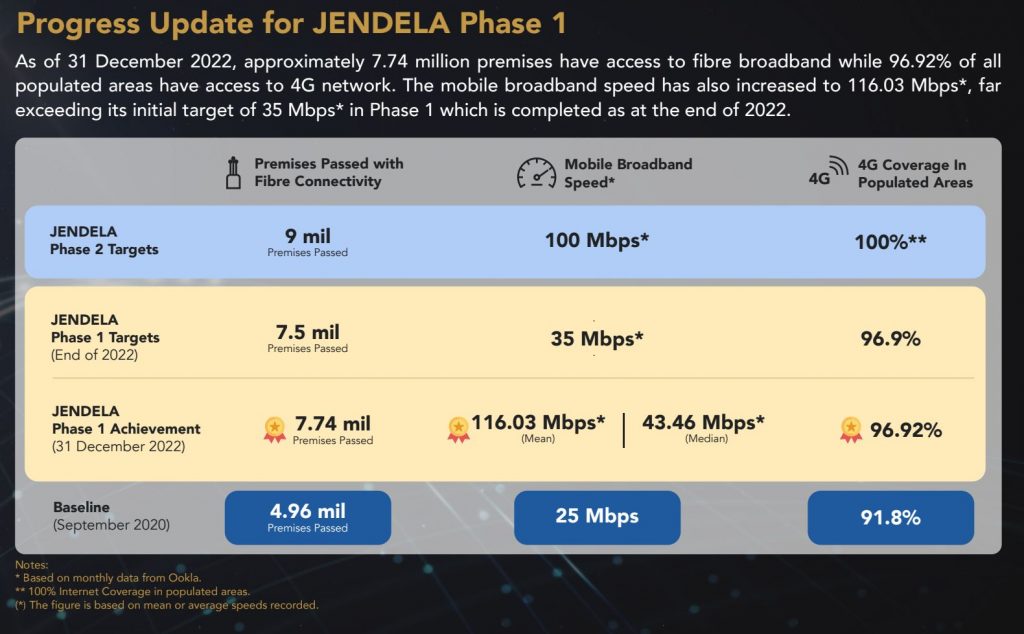
According to the Q4 2022 JENDELA report, Malaysia currently has 96.92% 4G population coverage which fulfilled its Phase 1 target of 96.9%. Meanwhile, the number of premises passed by fibre is at 7.74 million, which exceeds its original target of 7.5 million premises. In terms of mobile broadband speeds, MCMC quoted Ookla’s recorded speed of 116.03Mbps (Mean) or 43.46Mbps (Median), which far exceeds the original target of 35Mbps. However, take note that recorded speed included both 4G and 5G data.
As a baseline for comparison, Malaysia had 4.96 million premises passed by fibre and 4G coverage stood at 91.8% of populated areas in September 2020. At the time, Malaysia’s average mobile broadband speed was at 25Mbps.
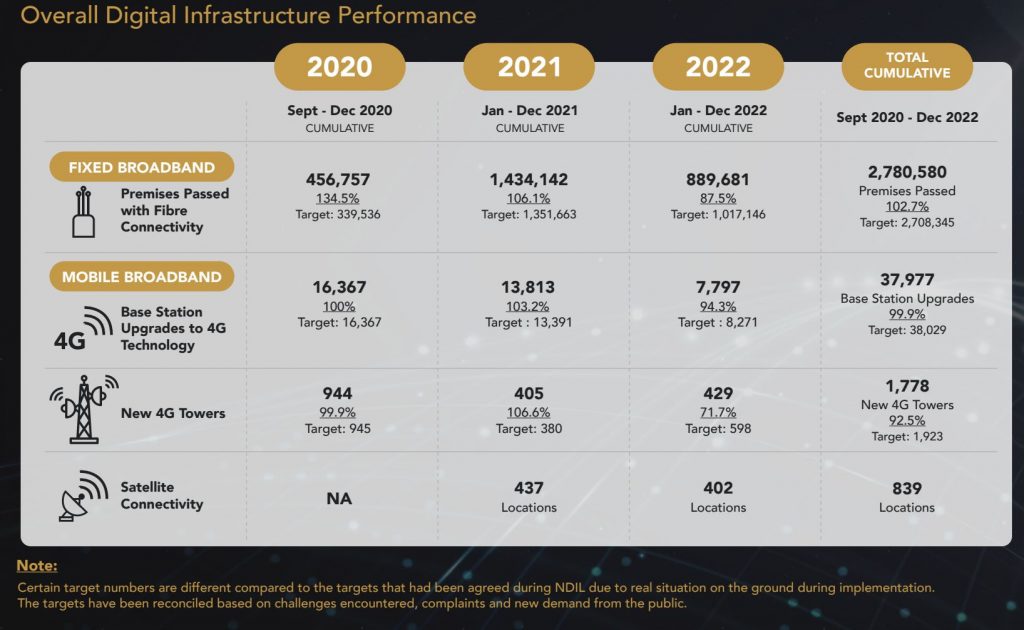
Under the JENDELA initiative, a total of 2,780,580 new premises have been based by fibre, which is a 56% increase over a span of 27 months. A total of 37,997 mobile base stations have been upgraded to the latest 4G technology and a total of 1,778 new 4G towers have been erected. To bridge the digital divide in rural Malaysia, MCMC has also deployed satellite broadband connectivity at 839 locations.
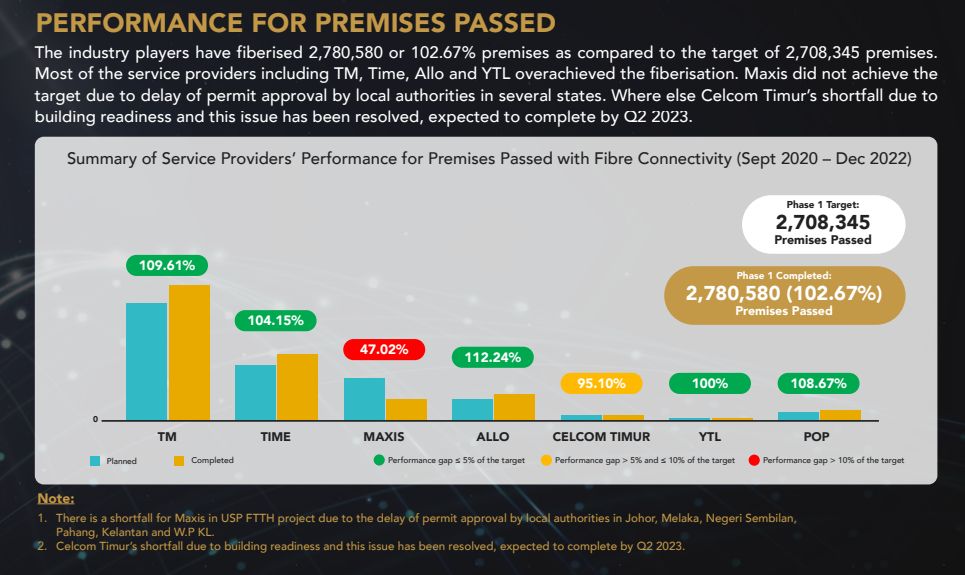
When it come to fiberisation, TM contributed the most, followed by Time, Maxis, Allo, Celcom Timur and YTL. Most of them have exceeded their fiberisation targets except for Maxis which reported a shortfall due to delay of permit approvals by local authorities. Celcom Timur also has a slight gap in its deliverables due to issues related to building readiness.
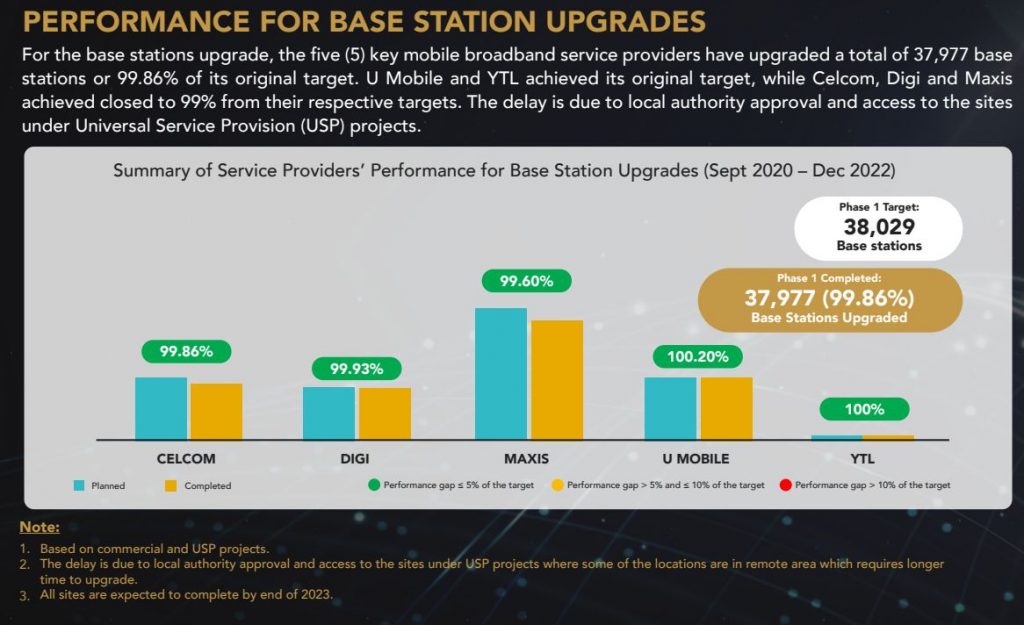
For base station upgrades, Maxis has completed the most, followed by U Mobile, Celcom, Digi and YTL Communications. There are some delays for certain sites due to local authority approval and challenges to access sites under the Universal Service Provision (USP) projects which are located in very remote areas. The remaining planned site upgrades are expected to be completed by the end of 2023.

According to JENDELA’s report, only the big four telcos have contributed to new 4G tower constructions. Both Maxis and U Mobile have pretty much completed most of the new planned 4G tower deployments, while Digi and Celcom still have some outstanding sites due to local authority approval under USP projects. The remaining new 4G towers are expected to be completed by the end of 2023.
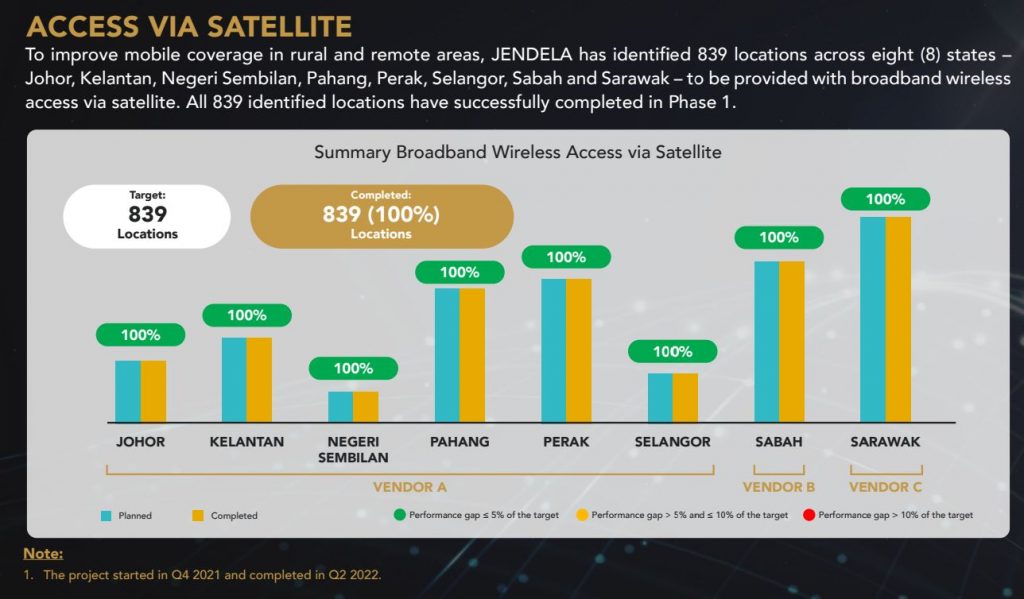
For areas that not feasible to deploy 4G or fibre, a total of 839 locations have been deployed with Broadband Wireless Access via satellite. Despite the delay of delivering all sites by October 2021, all 839 planned locations have been deployed with satellite connectivity within the Phase 1 period. Sarawak has the most sites at 523, followed by Sabah with 138 sites and Peninsular Malaysia with 178 sites.
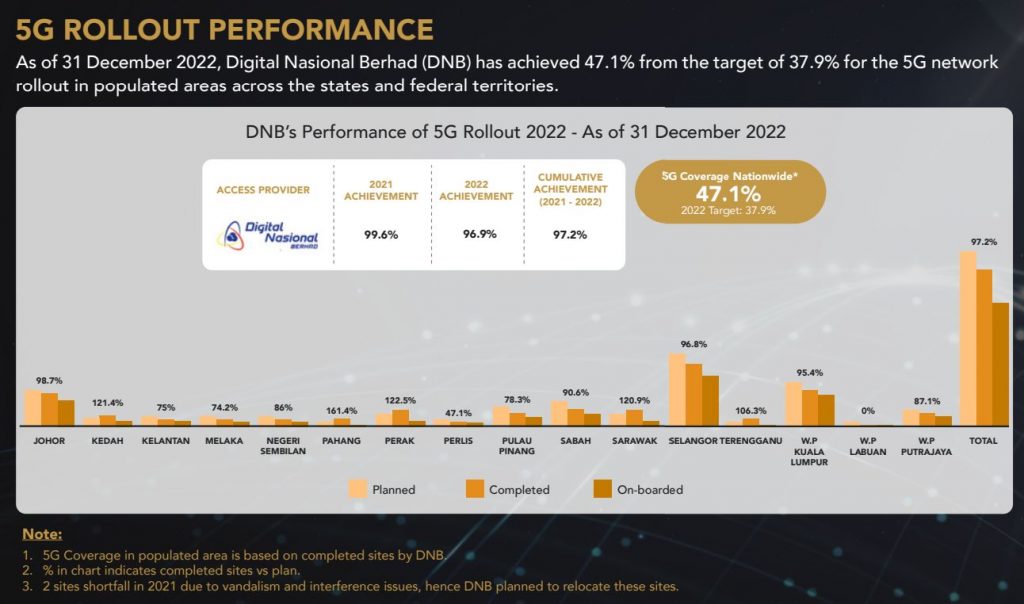
When it comes to 5G, MCMC reported that DNB has achieved 47.1% 5G population coverage by the end of 2022 which exceeded its 2022 target of 37.9%. Despite having a higher claimed population coverage achievement, it is worth highlighting that DNB deployed approximately 3,900 sites by the end of 2022, which is behind its original planned 4,018 sites for the year. According to DNB, the reduced site count is a result of supply chain issues and they make up for the shortfall by redirecting its deployment efforts to other states which were initially intended for 2023 and beyond.
The MCMC said that Phase 2 of JENDELA is expected to begin in Q3 or Q4 2023. Under Phase 2, it aims to increase fiberisation to cover 9 million premises passed and to increase mobile broadband access with 100% 4G population coverage. Interestingly, MCMC still targets for a mobile broadband speed of 100Mbps under Phase 2 despite already achieving 116.03Mbps in Phase 1 through 5G rollout.
You can view the final JENDELA Phase 1 report here.
0 comments :
Post a Comment